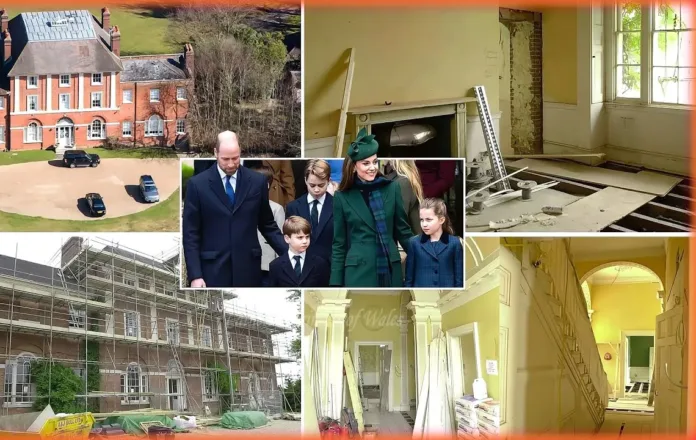Prince William’s shift to Forest Lodge marks a symbolic push for a stripped-down monarchy
Prince William is preparing to leave Adelaide Cottage in Windsor Home Park for the nearby Forest Lodge, in what is being seen as the clearest signal yet of his vision for a slimmed-down monarchy. The move, described as his family’s “forever home”, comes after a turbulent year in which both his father, King Charles III, and his wife, the Princess of Wales, underwent cancer treatment.
Sources close to the Prince of Wales say the upheaval has prompted him to consider how the monarchy can survive in a changing Britain. His answer appears to lie in scaling back the institution, rejecting the trappings of grandeur, and presenting a family life that feels more relatable to ordinary citizens.
Crucially, the move symbolises a permanent goodbye to Buckingham Palace. Charles’s decision to remain at Clarence House has now been cast in stone, leaving William to carve his own path. Forest Lodge, an eight-bedroom residence valued at £16 million, is hardly humble, but it is no more ostentatious than a large Kensington mansion. More importantly, it is designed for privacy. William and Catherine will reportedly have no live-in staff, with the Prince keen to take on school runs himself, even as king.
The shift represents one of the most radical relocations by a British royal in centuries. Instead of Windsor Castle or a return to London, William has chosen a relatively modest base that echoes the lifestyles of Europe’s “bicycling monarchs” in Scandinavia and the Low Countries. These royals have long embraced ordinary routines while still embodying their nations’ traditions.
By contrast, Charles and Camilla have shown little appetite for reform. While Charles has spoken of streamlining the monarchy, his coronation clung to medieval pomp. From the king’s speech to the changing of the guard, rituals continue largely untouched. William, by comparison, appears ready to turn symbolism into action.
The monarchy’s survival, analysts argue, depends on precisely this kind of modernisation. Walter Bagehot, the 19th-century commentator, once described royalty’s “mystical and theatrical” dignities. In an era when only a third of under-25s back the monarchy, William is acutely aware that mystique alone will not preserve legitimacy.
The model abroad is clear. Dutch monarchs have cycled publicly for generations, while King Willem-Alexander once worked as a commercial pilot. Belgium’s royals are often pictured cycling together. These families are seen as accessible, not untouchable. William, too, seems intent on crafting an image of ordinariness: a man who is both heir to centuries of tradition and a father queuing at the school gates.
Yet a deeper issue looms. What happens to the sprawling royal estate? Britain’s palaces – Buckingham, St James’s, Kensington, Windsor, Sandringham, Balmoral, Clarence House and Highgrove – are relics of empire, often underused and costly to maintain. Other European monarchies have ceded theirs to the state, transforming Versailles, Hofburg and El Escorial into public treasures. Buckingham Palace itself, with its 39-acre gardens, could be repurposed as a national museum or gallery. Opening its grounds to the public, as past monarchs did with Hyde Park, St James’s Park and Regent’s Park, would be a radical act of generosity.
For now, Forest Lodge may be a symbolic gesture, but it carries weight. William is positioning himself as the monarch who will shed gilded isolation in favour of everyday visibility. In doing so, he may find a survival strategy for an institution under increasing scrutiny.
If Britain is to embrace a new era of “pushbike royals”, William looks prepared to lead the ride.
